The wattage requirements for cricket field lighting can vary significantly based on the level of competition and the specific needs of the venue. For instance, local club matches may have different lighting demands compared to international test matches or Twenty20 games. Traditionally, cricket stadiums have relied on high-intensity floodlights to ensure the entire pitch is well-illuminated, facilitating clear visibility for players and spectators alike. However, with advancements in lighting technology, many cricket stadiums are now undergoing substantial upgrades or retrofitting their existing systems with energy-efficient LED lights.
Understanding the precise wattage needed for cricket ground lights is crucial for optimizing performance and ensuring compliance with regulatory standards. The shift towards LED lighting not only addresses energy efficiency concerns but also enhances the quality of illumination, providing brighter and more uniform light coverage across the playing field. This transition reflects a broader trend in sports venue management where the focus is on achieving superior lighting outcomes while also reducing operational costs. Therefore, it is essential for stadium owners and facility managers to carefully assess their lighting requirements and consider the benefits of modern LED technology in meeting their specific needs.
Table of Contents
ToggleAverage Cricket Stadium Lights Wattage
Class I: International, National, or Regional Cricket Tournaments
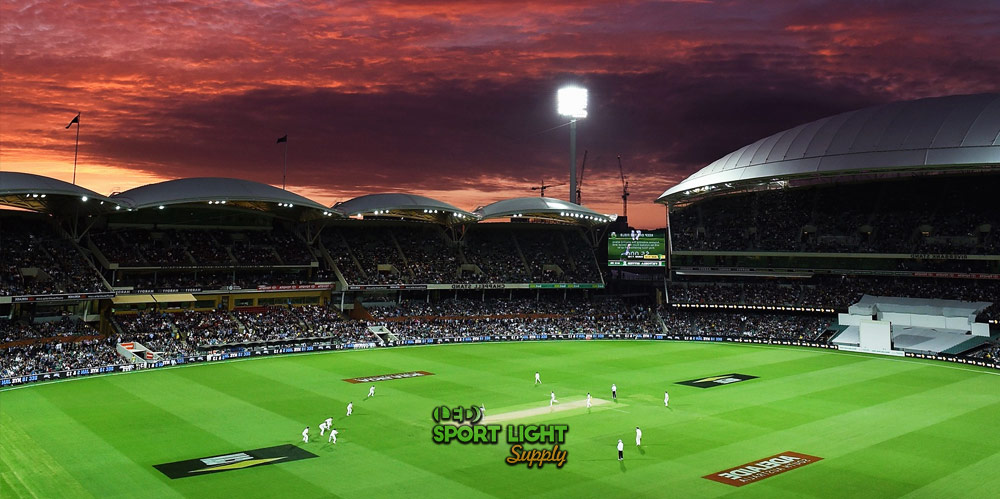
For Class I cricket stadiums, which host international, national, or regional tournaments, the lighting requirements are the most demanding. The wattage needed for adequate illumination varies depending on the type of lighting used:
| Light Source | Cricket Stadium Lighting Wattage |
|---|---|
| LED | 100,000 to 200,000W |
| Metal Halide | 300,000 to 600,000W |
| Halogen | 1,000,000 to 2,000,000W |
Due to the need to meet specific horizontal and vertical illuminance levels for broadcasting, an additional 10% to 20% power might be necessary. This extra power ensures that the lighting meets the high standards required for televised matches.
The substantial difference in power consumption between LED and halogen lights is attributed to their luminous efficacy. LEDs provide around 150 lumens per watt, whereas halogens deliver only 15 lumens per watt. This efficiency means that LEDs require significantly less power to achieve the same level of brightness. The following table summarizes the wattage requirements for Class I cricket venues:
In modern cricket stadiums, LED lights are preferred over metal halide, high-pressure sodium (HPS), mercury vapor, or halogen lights due to their superior efficiency and brightness at lower power consumption levels.
Class II: Local Cricket Competitions or Training

Class II cricket fields, designed for regional or local club competitions and training, have lower lighting requirements compared to Class I. The wattage needed for different types of lighting is as follows:
| Light source | Cricket field light wattage required |
| LED | 50,000 to 120,000W |
| Metal halide | 150,000 to 400,000W |
| Halogen | 500,000 to 1,200,000W |
The reduced power requirement reflects the lower illuminance needed for these venues. Although the wattage is lower, halogen lights still demand significant power. Switching from metal halide or halogen to LED lights can lead to substantial energy savings, making LEDs a more cost-effective choice.
Class III: Recreational, High School, or College Cricket Grounds
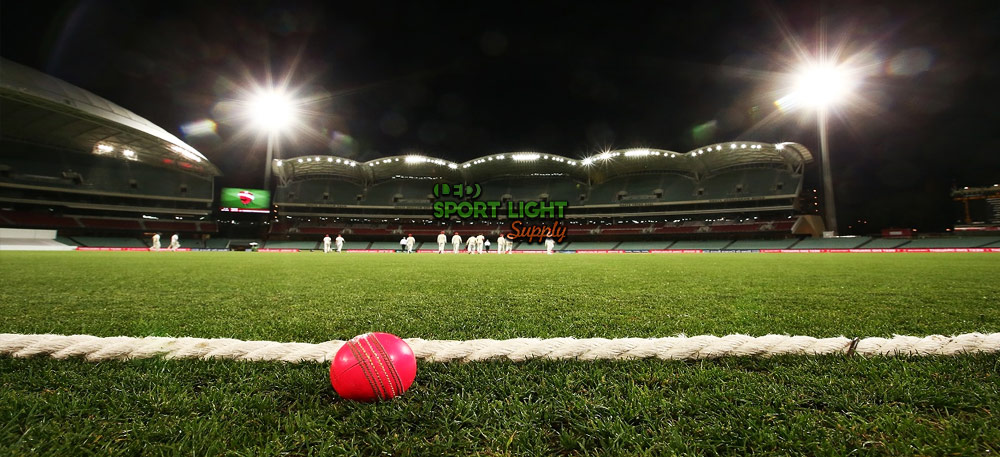
For Class III cricket grounds, which include recreational, high school, or college fields, the lighting requirements are the least demanding. These venues typically do not accommodate spectators, so lower illuminance levels are sufficient. The required wattage for different lighting types is:
| Light source | Wattage needed |
| LED | 20,000 to 80,000W |
| Metal halide | 60,000 to 250,000W |
| Halogen | 200,000 to 800,000W |
The lower wattage requirements align with the reduced need for bright lighting in these settings. As with other classes, using LEDs can offer considerable energy savings compared to traditional halogen or metal halide lights.
Factors Affecting the Required Wattage of Cricket Field Lighting
Proper lighting is crucial for cricket fields and stadiums to ensure optimal visibility and performance. Even within the same classification, the wattage requirements can vary significantly due to several factors. Understanding these factors helps in selecting the right lighting to meet both performance and cost efficiency.
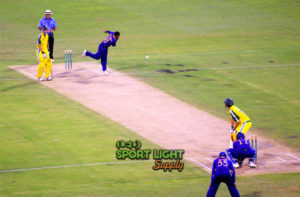
Size of Cricket Ground
The size of the cricket ground impacts the wattage required for lighting. Larger fields need more lumens to ensure uniform illumination across the entire area. To determine the wattage needed, first calculate the number of lumens required by multiplying the desired lux level by the field size in square meters. Then, divide this result by the luminous efficacy of the lighting fixture to find the power needed. Therefore, the wattage is directly proportional to the size of the cricket field, meaning that as the field size increases, more wattage is required to achieve the necessary brightness.
Cricket Stadium Light Pole Height
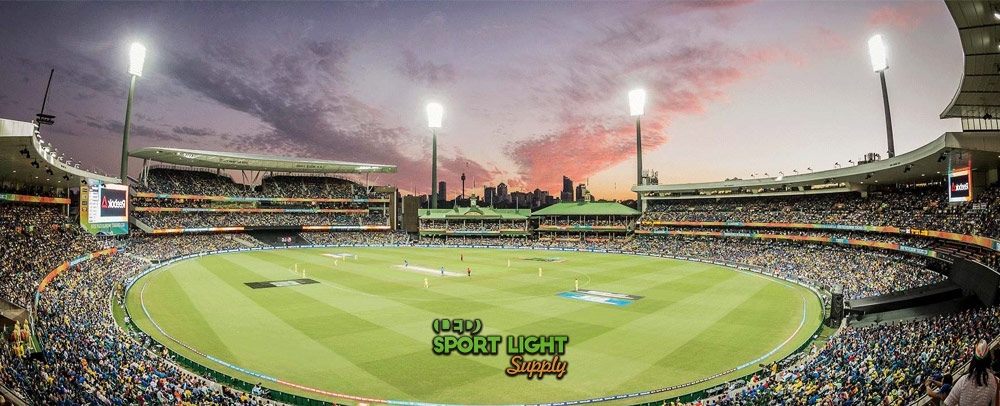
The height of the light poles influences the power needed for proper illumination. Taller poles can lead to increased light loss because the light beam diverges and attenuates as it travels through the air. To mitigate this effect, you may need to increase the wattage of the lighting fixtures or use fixtures with a smaller beam angle to concentrate the light more effectively. Typically, cricket field light poles range from 14 to 50 meters (46 to 164 feet) in height, with Class I and Class II fields often requiring taller poles. Consequently, these fields will need more wattage to ensure adequate lighting coverage.
Light Source
The type of light source affects the wattage requirements due to differences in luminous efficacy. For example, a 50,000-watt LED light can provide the same brightness as a 150,000-watt metal halide or a 500,000-watt halogen flood light. Therefore, using halogen lights would result in significantly higher power consumption compared to LEDs. The choice of light source is crucial in managing energy efficiency and overall power usage.
Level of Competition
The level of competition determines the required illuminance, which impacts the wattage needed. For recreational or practice fields (Class III), a lux level of 200 to 300 is sufficient. Regional competition fields (Class II) need a lux level of 300 to 500. For national or international tournaments (Class I), a lux level of 500 to 750 is typically required, with some high-profile events needing more than 1,000 to 1,500 lux for optimal televised broadcasts. The higher the level of competition, the greater the illuminance required, leading to increased wattage needs.
Cricket Field Light Pole Layout
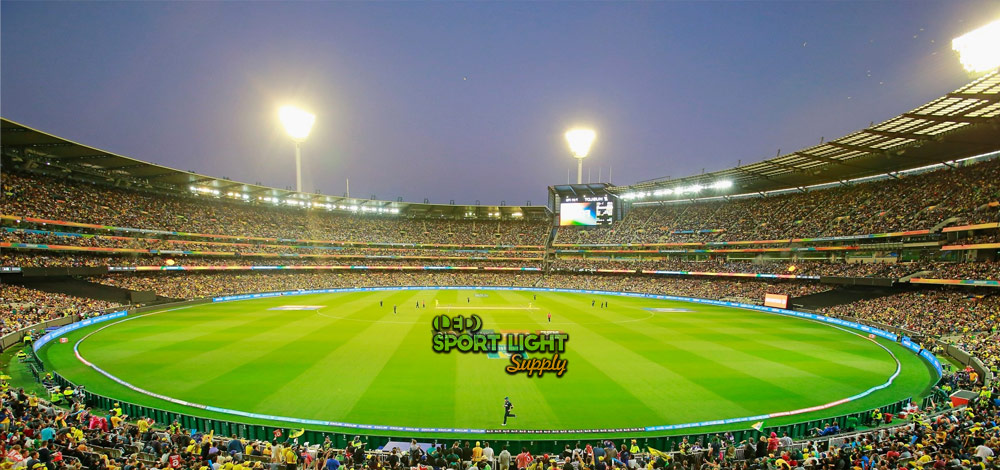
The layout of light poles can affect the wattage requirements for a cricket field. By increasing the number of poles, you can reduce the wattage needed per pole, as each pole covers a smaller area and minimizes light loss. However, this approach also increases the cost of both the poles and their installation. Therefore, it is advisable to consult with a lighting designer to balance the number of poles, lighting efficiency, and cost.
LED Chip Brand
The brand and model of LED chips influence the wattage needed due to variations in luminous efficacy. Different LED chips, such as those from OSRAM or CREE, offer different levels of efficiency, with some producing 130 lumens per watt while others achieve up to 200 lumens per watt. Using higher-efficiency LEDs can reduce the overall wattage required, though they may come at a higher initial cost. Investing in high-lumen LEDs can result in significant energy savings and lower operational costs over time.
How to Reduce the Wattage Needed for Cricket Stadium Lights
Reducing the wattage needed for cricket stadium lights can significantly lower operational costs and improve energy efficiency. The difference between running a 50,000-watt LED light and a 500,000-watt halogen light is substantial, making energy savings a key consideration. For instance, operating a 50,000-watt LED light for 6 hours a day results in a daily running cost of approximately $30, while the same duration for halogen lights amounts to around $300. To achieve these savings, consider the following strategies:
Metal Halide and Halogen Replacement
One of the most effective ways to reduce wattage is to replace outdated metal halide or halogen lamps with LED lights. Conventional light sources like metal halide and halogen are less energy efficient. For example, you would need 10,000 watts of halogen lighting to match the brightness of just 1,000 watts of LED lighting. Switching to LEDs not only reduces energy consumption but also lowers maintenance costs, as LEDs typically have a lifespan of over 150,000 hours. Investing in LED lighting can provide long-term savings and enhanced performance.
Use More Light Poles
Light attenuation occurs as light travels through the air, leading to a loss of illumination. By increasing the number of light poles, you can reduce this light loss by shortening the distance the light must travel. Each pole illuminates a smaller area, thus improving overall lighting efficiency. However, this solution may not be feasible for all cricket stadiums due to constraints related to layout and construction. Additionally, the cost of installing more poles can be significant, so it is important to balance the benefits with the associated expenses.
Use Flood Lights with Narrow Beam Angle
Floodlights with narrow beam angles, such as those under 15 degrees, concentrate light more effectively on specific areas like the cricket pitch. This focused illumination can reduce the total wattage required while maintaining high lighting standards. However, using too many narrow-beam floodlights can increase glare, which may affect visibility and player performance. It is essential to find a balance between light concentration and glare control.
Shorter Light Poles
Installing shorter light poles is another strategy to reduce wattage. Shorter poles minimize light loss by keeping the light beam closer to the ground and allow for the use of wider beam angles, which can effectively illuminate shorter distances. This approach can result in a reduction of wattage by 5 to 10%. However, if the poles are too short, there may be visibility issues, such as difficulty seeing the cricket ball when it is hit high and rises above the pole height.
Getting a Full DIALux Lighting Design
Utilizing DIALux, a photometric design software, can help optimize lighting efficiency by simulating lux levels, lighting uniformity, and glare ratings. By creating a detailed lighting design, you can estimate the exact wattage required and avoid over-lighting, which leads to unnecessary electricity consumption. A well-planned lighting design ensures that you achieve the desired illumination levels while minimizing wattage and operational costs.
Implementing these strategies can help reduce the wattage required for cricket stadium lighting, leading to significant cost savings and improved energy efficiency.
Conclusion
Optimizing cricket stadium lighting to reduce wattage not only lowers operational costs but also enhances energy efficiency. By replacing outdated metal halide or halogen lights with modern LEDs, using more light poles to minimize light loss, employing floodlights with narrow beam angles, and considering shorter poles or advanced lighting designs with tools like DIALux, stadiums can achieve effective illumination while conserving energy. These strategies collectively ensure that cricket fields are well-lit for optimal performance and visibility, all while supporting sustainability and cost savings. Adopting these measures represents a proactive approach to balancing high lighting standards with environmental and financial responsibility.
